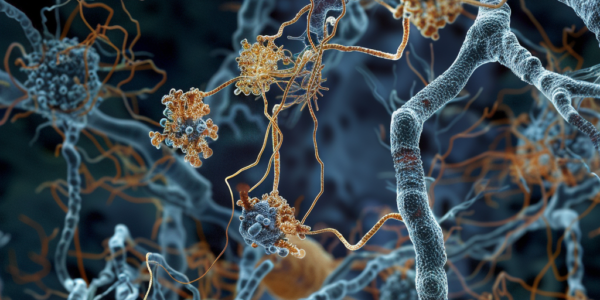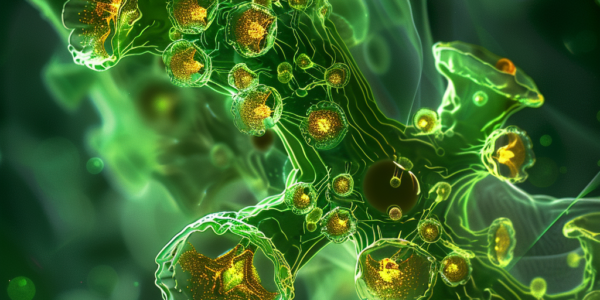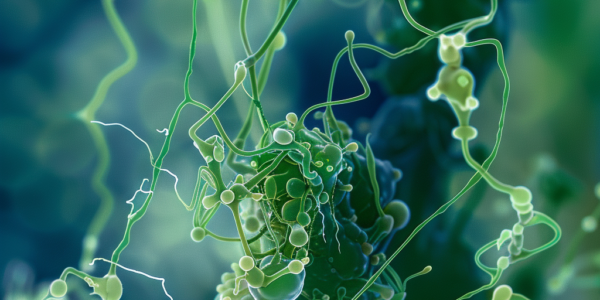Study Reveals Similarities in Protein Structures Between Alzheimer’s Disease and Down Syndrome
A recent study published in Nature Structural and Molecular Biology has utilized advanced cryo-electron microscopy imaging technology to investigate the similarities in protein structures between Alzheimer’s disease and Down syndrome. Lead investigator Ruben Vidal, Ph.D., highlighted the presence of amyloid β (Aβ) and abnormal accumulation of tau protein in individuals with both Down syndrome and Alzheimer’s disease. The study aimed to determine whether differences exist in the protein structures of Aβ and tau filaments between individuals with only Alzheimer’s disease and those with both Down syndrome and Alzheimer’s disease. The research team conducted a comparative analysis of high-resolution images of Aβ and tau filaments in individuals with Down syndrome and Alzheimer’s disease, and those with only Alzheimer’s disease. Vidal emphasized the potential implications of their findings, suggesting that the study may pave the way for improved treatments for both Alzheimer’s disease patients and individuals with Down syndrome. This study sheds light on the common mechanisms at play in individuals with sporadic Alzheimer’s disease and those with both Down syndrome and Alzheimer’s disease.
Chinese Scientists Make Groundbreaking Discovery in Pancreatic Cancer Treatment
Chinese scientists have discovered two protein markers that may predict chemotherapy sensitivity in pancreatic cancer, offering hope for improved survival rates. The groundbreaking study, published in Nature Medicine, could revolutionize the diagnosis and treatment of the most common subtype of pancreatic cancer, offering new hope for patients and the medical community.
University of Washington Researchers Develop AI Program to Design Atomically Accurate Antibodies
University of Washington researchers have developed a generative AI program capable of designing atomically accurate antibodies, revolutionizing antibody generation and offering faster, more efficient alternatives. The AI program has shown success in creating antibodies for bacterial toxins, COVID-19, respiratory syncytial virus, and influenza, promising to accelerate the production of antibodies crucial in fighting infectious diseases. This breakthrough in AI-powered antibody design holds great promise for the future of therapeutic development and disease treatment.
Scientists Make Groundbreaking Discovery in Understanding Ebola Virus Replication Process
Scientists in Canada and the U.S. have made a groundbreaking discovery in understanding the replication process of the deadly Ebola virus. The research sheds light on how the virus interacts with a human protein called ubiquitin and identifies a potential target for new drugs to prevent the disease. The study utilized a combination of experimental and computational methods to investigate the interaction between the Ebola virus VP35 protein and ubiquitin chains, leading to the identification of potential chemical compounds that could disrupt this interaction. This breakthrough offers a promising avenue for the creation of more effective therapies to combat the devastating outbreaks and high mortality rates of the Ebola virus.
Researchers Make Strides in Understanding LAG-3 Protein
Researchers at Stanford University and New York University have made significant strides in understanding the properties of the LAG-3 protein, shedding light on its structure and function. This breakthrough could have far-reaching implications for the development of immune checkpoint inhibitor drug candidates targeting LAG-3. The study, published in Proceedings of the National Academy of Sciences, provides crucial insights into the molecular structure of LAG-3 and how it operates. LAG-3, like other checkpoint proteins, serves to prevent the immune system from attacking non-threatening entities. In the context of cancer, these proteins can shield tumor cells from immune recognition, hindering the body’s natural defense mechanisms. While existing antibody treatments focus on checkpoint proteins CTLA-4 and PD-1, the unique mode of action of LAG-3 presents an opportunity for novel approaches in cancer therapy. Scientists are optimistic about the potential of targeting LAG-3, driven by its distinct mechanisms compared to CTLA-4 and PD-1.
New Research Uncovers Atomic Secrets of Photosynthesis
New research has uncovered the atomic secrets of photosynthesis, shedding light on the intricate process of chloroplast RNA polymerase transcription. This breakthrough offers potential for enhancing crop resilience and deepening our understanding of plant growth mechanisms. The study, published in Cell, not only presents a model but also provides resources to stimulate further fundamental discoveries in this field and support the long-term goal of developing more resilient crops.
University of Copenhagen Scientists Utilize Blue-Green Algae to Create Sustainable ‘Meat Fiber-Like’ Protein Strands
University of Copenhagen scientists have made a groundbreaking discovery in sustainable food production by utilizing blue-green algae to produce ‘meat fiber-like’ protein strands. This achievement could revolutionize the production of sustainable foods, providing the right texture with minimal processing. The research offers a promising solution to challenges in replicating the texture and mouthfeel of traditional animal-based foods in plant-based alternatives, and demonstrates the minimal processing required for maximum sustainability.
Mycoprotein Shows Promise in Lowering Cholesterol Levels, Study Finds
Discover the potential benefits of incorporating mycoprotein into your diet to improve cholesterol levels and reduce cardiovascular risk factors. A new study published in Clinical Nutrition highlights the significant reduction in total circulating cholesterol concentrations among overweight adults with high cholesterol levels after a four-week mycoprotein intervention. Learn more about the promising avenue for managing cardiovascular health with mycoprotein.
Study Shows Swapping Red Meat for Plant Protein Has Health and Environmental Benefits
A new study published in Nature Food reveals that reducing red meat consumption by half can lead to a 25% decrease in carbon footprint and potentially increase longevity by approximately nine months. The findings support the latest Canada Food Guide, emphasizing the benefits of plant protein foods for both health and the environment.
The Complexity of the Sense of Touch: Insights from Recent Study
Our bodies are equipped with an intricate sensory system that allows us to perceive the world around us. The sense of touch encompasses a combination of different sensations working in unison, as a recent study published in Science sheds light on the molecule responsible for detecting gentle touch. Understanding the mechanisms behind gentle touch sensation not only provides insights into our sensory abilities but also holds potential implications for various fields, including neurobiology and medical research.










